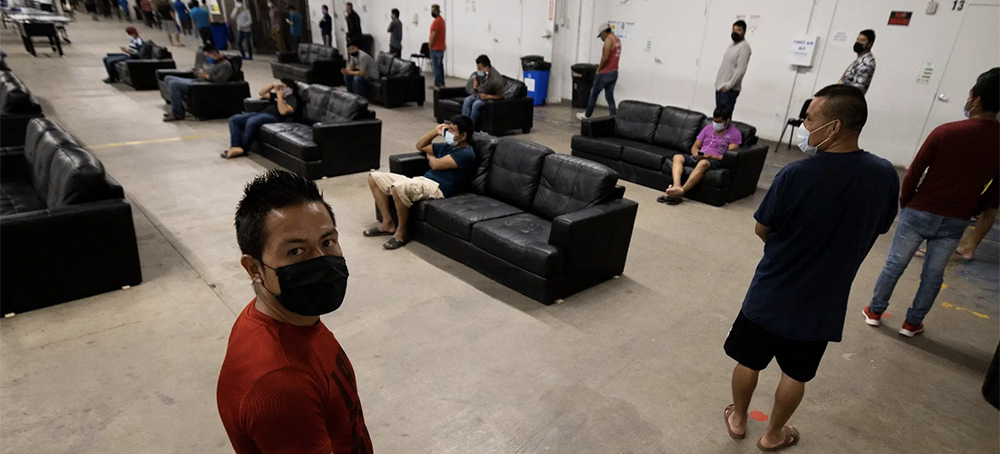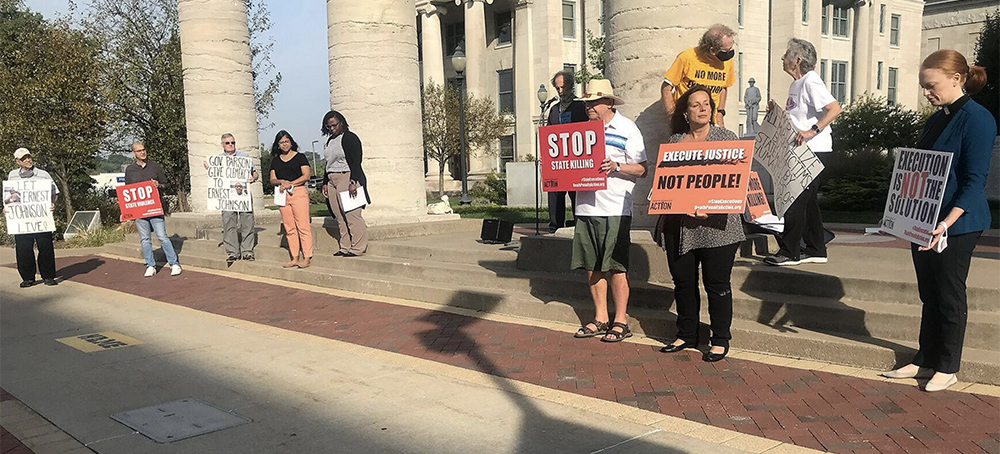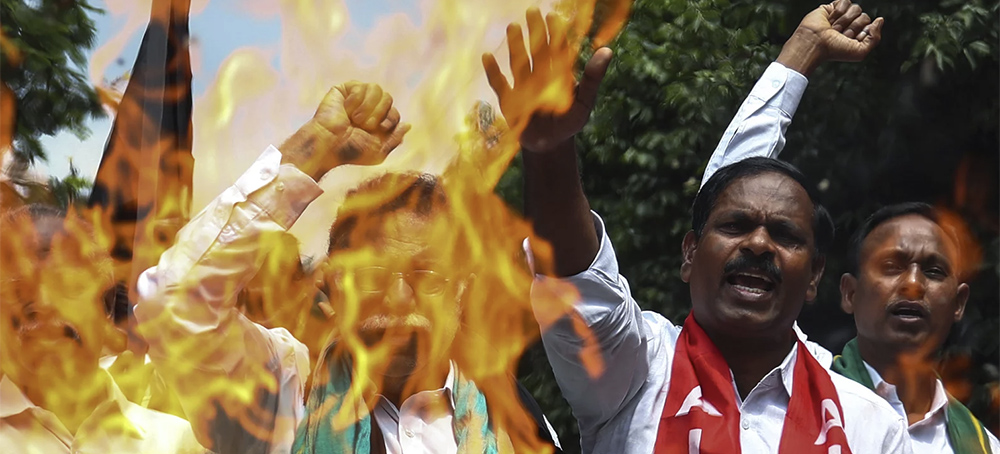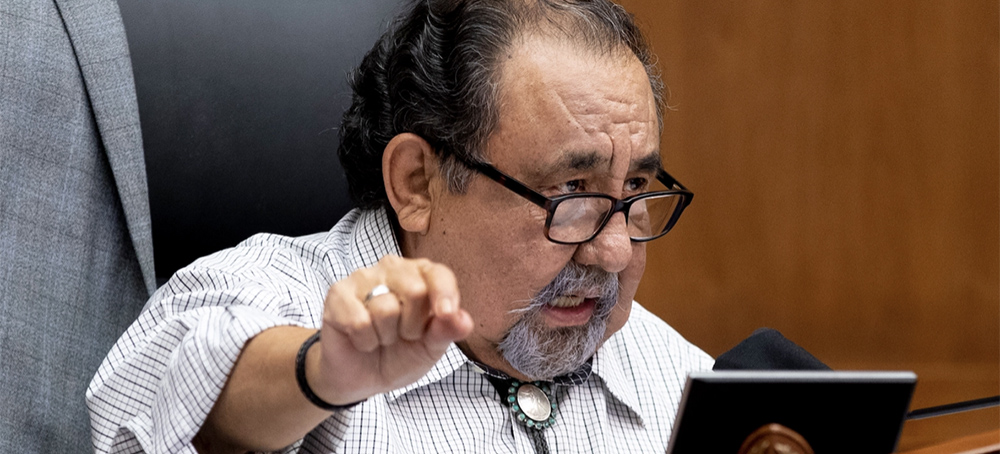Live on the homepage now!
Reader Supported News
“At Facebook, we have worked tirelessly to acquire a world-class collection of politicians,” Zuckerberg said. “On January 6th, we recklessly and foolishly endangered that very expensive investment.”
“We can—we must—do better,” Zuckerberg added.
Nick Clegg, the former Deputy Prime Minister of the U.K. who is now a Facebook executive, vouched for Zuckerberg’s sincerity. “As a politician who was purchased by Facebook, I can assure you that Mark is committed to protecting the lives of others in my asset class,” he said.
For his part, Zuckerberg said that Facebook would avoid enabling insurrections going forward and would instead focus on its core business of destroying users’ mental health.
 'On March 11, 1958, the Gregg family was going about their business when a malfunction in a B-47 flying overhead caused the atomic bomb on board to drop on to their S.C. backyard.' (photo: The Daily Beast/Getty Images)
'On March 11, 1958, the Gregg family was going about their business when a malfunction in a B-47 flying overhead caused the atomic bomb on board to drop on to their S.C. backyard.' (photo: The Daily Beast/Getty Images)
On March 11, 1958, the Gregg family was going about their business when a malfunction in a B-47 flying overhead caused the atomic bomb on board to drop on to their S.C. backyard.
Given the history of nuclear proliferation throughout the 20th century, it seems like a miracle that only two atomic bombs were ever deployed against the human population. And, it turns out, it really was a very lucky break.
There is one part of atomic history that hasn’t made the history books. Throughout the Cold War, the U.S. dropped several atomic bombs on unsuspecting people below, bombs that were multiple times more powerful than those dropped on Hiroshima and Nagasaki at the end of World War II. Rather than being acts of extreme aggression, these “broken arrows” as they became known, were pure accidents, explosive “oopsies” committed by the U.S. military against mostly U.S. citizens. In what has been hailed as either luck or very proficient engineering of safety devices, none of the nuclear components on the falling bombs actually detonated.
It’s a near miss that one family in South Carolina was intimately familiar with. On the afternoon of Tuesday, March 11, 1958, the Gregg family was going about their business—kids playing in the yard, parents puttering around the house—when a malfunction in a B-47 flying overhead caused the nuclear bomb on board to drop out of the cargo hold and onto their Mars Bluff backyard. Miraculously, the only lives lost that day were those of the family’s free roaming chickens.
“You can’t really describe it. The noise was incredible, and the dust was crazy”
The three young girls—Helen, 6, Francis, 9, and their cousin Ella Davies, 9—had been playing in their outdoor playhouse for most of the afternoon. A little after 4 p.m, they wandered about 200 feet away as they continued their games. Their mother was inside the house sewing, while her husband, Walter, was working in the garage with their 6-year-old son, Walter Jr.
Suddenly, all hell broke loose. Around 4:20 p.m., a loud boom sounded and the sides and roof of the garage were blown off. The family home was shifted off of its foundation, with holes opening in the exterior structure and the furniture inside reduced to rubble. The backyard garden—including the girls’ playhouse—had vanished. In its place was a massive crater over 50 feet wide and 30 feet deep. Dust and debris filled the air.
“You can’t really describe it. The noise was incredible, and the dust was crazy,” Walter Jr. told The Sun News in 2003. His father added, “You couldn’t see 10 feet in front of your face.”
As the confusion and the smoke began to clear, Walter set about tracking down the members of his family. Everyone was a little worse for wear, with cousin Ella suffering the most severe injury with a cut to her face that required 31 stitches, but they were all miraculously alive.
Two locals driving nearby heard the sound, saw a “large mushroom-shaped cloud”bloom over the Greggs’ property, and rushed to their neighbors’ aid. They loaded the Gregg family into their car and quickly drove them to the hospital. At that time, the Greggs still had no idea what had caused the sky to fall down around them.
In the meantime, the people who did know and who were no doubt in the middle of a massive panic attack, were the occupants of the B-47 now circling in that very same sky above, waiting for further instruction.
Mars Bluff was one of the earliest near misses on U.S. soil, but it was by no means the last. Today, it seems crazy no major action was taken to stop the flights that led to these Cold War accidents—or, at least, no major action that we know of. The public is still in the dark about much of this history. In 2018, nuclear weapons analyst Stephan Schwartz told WUNC that the Pentagon had come clean about 32 of these accidents, but that there was credible documentation that there were thousands more that they remain mum about.
"If you go through some of the archival evidence publicly available, it seems like once a week or so, there was some kind of significant noteworthy accident that was being reported to the Department of Defense or the Atomic Energy Commission or members of Congress,” Schwartz said.
The justification for this massive risk to the American people was the bigger risk posed by the Soviet Union. In order to keep the country on ready alert for a nuclear attack, the military had nuclear-armed bombers constantly flying in the skies above. Two years after the Mars Bluff accident, they would launch Operation Chrome Dome, which mandated that multiple B-52’s armed with two nukes each would be in the air 24 hours a day.
While this program had not officially launched when the Greggs’ home was bombed, preparations were being made.
The B-47 in question that day was in the middle of a training exercise named “Operation Snow Flurry,” which required the specialized crew to load their plane with an atomic bomb, and fly from Savannah, Georgia to the U.K. on a practice run.
Almost from the beginning, things started to go wrong. The crew was being timed, so the pressure was on to perform at their absolute best. Needless to say, stress was running high, especially as the delays began before they had gotten even close to getting off the ground. The source of those delays: their deadly passenger, which was refusing to properly lock into its seat in the cargo bay. So, the crew did what anyone would do with a troublesome atomic weapon more destructive than those dropped on Japan on their hands…they MacGyvered it.
“When the loading team had trouble engaging the steel locking pin, they called the weapons release systems supervisor for assistance. He took the weight of the weapon off the plane’s bomb-shackle mechanism, put it onto a sling, and then ‘jiggled’ the pin with a hammer until it seated,” Clark Rumrill wrote in American Heritage in 2000.
The problem with this solution became apparent soon after takeoff. During takeoff, it was policy for the locking mechanism to be disengaged to allow the crew to quickly offload the bomb in case of an emergency. Once in the air, they were required to lock the bomb back into place for the safety of all involved.
But the bomb wouldn’t re-lock and a red light began to flash in the cockpit. The plane’s 29-year-old navigator, Bruce Kulka, was sent to the cargo hold to manually adjust the locking pin. According to Rumrill, this required the entire plane to be depressurized, all of the airmen to go on oxygen, and for Kulka to ditch his parachute, as the passage to the cargo bay was too skinny for the extra bulk.
That was just the tip of the iceberg of the issues with this fix-it attempt. More critical was the fact that Kulka didn’t actually know where the locking pin was located. He was sent in to deal with a nuclear weapon blind, so to speak. What happened next was like something out of a very dark comedy.
“A short man, he jumped to pull himself up to get a look at where he thought the locking pin should be,” Rumrill wrote. “Unfortunately, he evidently chose the emergency bomb-release mechanism for his handhold. The weapon dropped from its shackle and rested momentarily on the closed bomb-bay doors with Captain Kulka splayed across it in the manner of Slim Pickens in Dr. Strangelove.
“Kulka grabbed at a bag that had providentially been stored in the bomb bay, while the more-than-three-ton bomb broke open the bomb-bay doors and fell earthward. The bag Kulka was holding came loose, and he found himself sliding after the bomb without his parachute. He managed to grab something—he wasn’t sure what—and haul himself to safety.”
The bomb fell 20,000 feet below and landed almost exactly on the Gregg daughters’ playhouse. While the nuclear bomb didn’t detonate—it is believed that the core of the bomb was transported separately at the time, though it has never been 100-percent clear if that was the case—the TNT contained in the bomb in order to trigger an atomic blast did.
Within two hours of the bomb falling, the entire force of the military had descended on the 50-person town of Mars Bluff to do damage control. They announced that no radiation had been discovered in the area and commenced a military clean up.
Amazingly, there was no real fallout from this early Cold War accident, at least in the U.S. Americans understood the great risks being taken in the name of protecting the home front, and they seemed to be OK with them. The story received bigger and more critical play in places like Canada and the U.K., countries that were American allies and thus were also subject to armed U.S. bombers flying overhead.
Walter Gregg, for his part, was shockingly good natured about the incident. After being promised compensation by the government for his destroyed home and property, he joked, “I’ve always wanted a swimming pool, and now I’ve got a hole for one at no cost.”
 Facebook's Mark Zuckerberg. (photo: Drew Angerer/Getty Images)
Facebook's Mark Zuckerberg. (photo: Drew Angerer/Getty Images)
How long will Facebook be down? Company says it is aware of issue – but not why it has broken or when it will come back online
The three apps – which are all owned by Facebook, and run on shared infrastructure – all completely stopped working shortly before 5pm. Other products that are part of the same family of apps, such as Facebook Workplace, also stopped working.
Visitors to the Facebook website simply saw an error page or a message that their browser could not connect. The WhatsApp and Instagram apps continued to work, but did not show new content, including any messages sent or received during the problems.
Facebook’s outages happen relatively rarely but tend to be vast in their impact, not least because they affect three of the world’s biggest apps.
The company is often cryptic about the causes of any issues, and does not tend to explain them even after they are fixed. In 2019, for instance, it suffered its biggest outage in years – and said only that it had “triggered an issue” during “routine maintenance operations”.
In a leaked transcript published in The Verge in 2019, chief executive Mark Zuckerberg note that such outages are a “big deal”. Any problems can often lead people to start using competitors instead, and noted that it can take “months” to win back trust and get people back on Facebook’s platforms – if they come back at all.
A company spokesperson said that it apologised for the problem but gave no indication of why the outage began or how long it might take to fix.
“We’re aware that some people are having trouble accessing our apps and products,” spokesperson Andy Stone said on Twitter. “We’re working to get things back to normal as quickly as possible, and we apologize for any inconvenience.”
The same statement was posted shortly after on the official Facebook Twitter page.
Instagram also shared a similar update.
“Instagram and friends are having a little bit of a hard time right now, and you may be having issues using them,” it wrote on its communications page. “Bear with us, we’re on it!”
And WhatsApp also updated users through its official Twitter account.
“We’re aware that some people are experiencing issues with WhatsApp at the moment. We’re working to get things back to normal and will send an update here as soon as possible,” it said.
“Thanks for your patience!”
Facebook’s shares had already plunged sharply as trading began on Monday, probably because of other ongoing criticism in the wake of allegations shared by a whistleblower who previously worked at the company.
The fall continued after the outage began, however, with the price dropping even more.
 Migrant farm laborers with Fresh Harvest working with an H-2A visa line up for a meal in the company living quarters on April 28, 2020 in King City, California. (photo: Brent Stirton/Getty Images)
Migrant farm laborers with Fresh Harvest working with an H-2A visa line up for a meal in the company living quarters on April 28, 2020 in King City, California. (photo: Brent Stirton/Getty Images)
Undocumented immigrants like myself were unnerved but not defeated by the Senate parliamentarian's ruling against including a pathway to citizenship in the new budget reconciliation bill. Right now, the world is watching as lawmakers such as Sen. Bob Menendez of New Jersey prepare alternative pathways and continue to fight for a pathway to citizenship and permanent legal status for millions of immigrants. If an immigration package passes, this legislation will fundamentally improve the livelihoods of millions of members of my community.
As an advocate and directly impacted person who understands the many barriers removed by being able to access a permanent immigration status, I must demand that this bill covers as many members of my community as possible — including the thousands of essential migrant workers who come to the US on temporary visas.
Without additional protections, many essential migrant workers are being exploited by employers
In 2017, I joined my alma mater in suing the Trump administration for rescinding the Deferred Action for Childhood Arrivals (DACA) program. While the Supreme Court sided with us and reinstated the program for thousands of immigrants, temporary status is far from enough. The same is true for the migrant workers on H-2 visas who work as farmworkers, landscapers, seafood processors, and in construction. In my role managing the policy area and gender equity projects at Centro de los Derechos del Migrante, a binational migrant workers organization, I see how H-2 workers are exposed to severe and abusive conditions every day: from extortion, coercion, and wage theft to sexual harassment and discrimination.
For this group of essential workers, a pathway to citizenship would provide an urgently needed arm of defense in the many structurally flawed labor migration programs where a worker's immigration status and employment are tied to a single employer, creating a deep power-imbalance between employer and worker.
During the pandemic, health and safety violations skyrocketed in seafood processing plants across the country where migrant workers worked, while the few existing legal protections ceased to be enforced. When migrant workers speak out, their employers retaliate and workers risk being fired and deported to their country of origin. I saw this happen to two Louisiana H-2B crawfish workers from Mexico, Maribel and Reyna, whose employer fired them after they sought medical treatment for COVID-19. They returned to Mexico as a result.
Congress must pass an inclusive immigration package
But a pathway to permanent immigration status for essential H-2 migrant workers means more than improved labor standards. Most migrant workers are practically barred from migrating with their families and children — regardless of how many years they have been coming to the US — causing unconscionable, seasons-long separations between families each year.
Last spring I had an emotional conversation with a Mexican woman who is an H-2B crab picker in Maryland and the bread-winner in her family. She was terrified she would never see her children again if she caught COVID-19, or that she would infect her family if she traveled back. A dignified immigration solution, like the one we advocate for, would enable migrant workers like her to migrate with their loved ones and as part of families — preventing their separation.
Adversaries may side with the parliamentarian, but they are overlooking the fact that immigrant and migrant communities will not give up. Last summer, after months of mobilization, we watched a conservative Supreme Court deliver a positive DACA decision when many presumed the worst. Now, a year later, due to extensive organizing, Senate leadership is exhausting as many avenues as possible, including returning to the parliamentarian with alternative immigration proposals.
As a DACA recipient, I'm all too familiar with the alternative: living in the limbo of temporary status at best, or under the threat of anti-immigrant litigation and at the mercy of the courts at worst. We cannot tolerate this option for H-2 workers and other essential workers like those in my family. Senate Majority Leader Chuck Schumer must include them in the immigration bills.
We have done our part: Immigrants' rights activists, leaders, and allies have ensured that an inclusive pathway to citizenship is on the table. Now it's time for our policymakers to stop at nothing to deliver on their promises, including a permanent immigration status for all.
 Activists gather to protest the upcoming execution of Ernest Lee Johnson at the Boone County Courthouse. Johnson's execution is set for Tuesday. (photo: Julia Eastham/Missourian)
Activists gather to protest the upcoming execution of Ernest Lee Johnson at the Boone County Courthouse. Johnson's execution is set for Tuesday. (photo: Julia Eastham/Missourian)
Missouri Democrats Cori Bush and Emanuel Cleaver II join Pope in calls to governor for sentence to be set aside
In a statement last week, Pope Francis requested clemency for Johnson in a letter to Missouri governor Michael Parson. The letter did not deny that “grave crimes such as his deserve grave punishment” but called on Parson to consider “the simple fact of Mr Johnson’s humanity and the sacredness of all human life.” If carried out it will be the first execution by Missouri since May 2020.
The Pope’s call for clemency has been joined by two of Missouri’s Democratic members of Congress, Cori Bush and Emanuel Cleaver II, who petitioned the governor to halt the execution.
Bush and Cleaver, both members of the Congressional Black Caucus, urged the governor to acknowledge “the moral depravity of executions” and argued that Johnson’s execution perpetuates the same cycles of trauma and violence against Black people as “slavery and lynching did before it”.
“The fact of the matter is that these death sentences are not about justice. They are about who has institutional power and who doesn’t,” they wrote. “Like slavery and lynching did before it, the death penalty perpetuates cycles of trauma, violence and state-sanctioned murder in Black and brown communities.”
Advocates for the condemned man, including Bush and Cleaver, say that he has had developmental delays since birth, when he was born with fetal alcohol syndrome to a mother who battled addiction. Johnson, 61, has also had an operation to take out a tumor that removed as much as 20% of his brain tissue, the AP reported, which advocates say has further reduced his intellectual capacity.
Johnson’s public defender, Jeremy Weis, has said that Johnson has scored between 67 and 77 in IQ tests and “meets all statutory and clinical definitions” of intellectual disability. Missouri law broadly defines intellectual disability as “substantial limitations in general functioning.”
But last month, the Missouri supreme court ruled that Johnson is not, as he claims, intellectually disabled and denied his request for execution by firing squad based on his claim that death by lethal injection would cause severe pain.
Johnson’s death sentence stems from February 1994 when he walked into a general store near his home in northeast Columbia and bludgeoned, stabbed, and shot three employees, Mary Bratcher, 46; Mable Scruggs, 57; and Fred Jones, 58, before hiding their bodies in a walk-in cooler and robbing the store for drug money.
Johnson’s scheduled execution has highlighted racial and social inequities in the application of justice. Issuing a call for clemency, the Kansas City Star’s editorial board noted that Parson had swiftly pardoned Mark and Patricia McCloskey, a white St Louis couple who plead guilty to assault after waving weapons at Black Lives Matter demonstrators last year.
The board criticized the governor for failing to convene a board of inquiry but said it did not “even dare to hope that the evidence that Johnson today has the awareness of a child might convince our governor to commute his sentence”.
It added: “When the state, our state, does kill this man, as it almost certainly will, it will be yet another indictment of a system so bloodthirsty that it delights in vengeance against those who don’t even know why they’re being punished.”
 Indian farmers protesting against Sunday's killing of four farmers in Uttar Pradesh state after being run over by a car owned by India's junior home minister Ajay Mishra. (photo: Mahesh Kumar A/AP)
Indian farmers protesting against Sunday's killing of four farmers in Uttar Pradesh state after being run over by a car owned by India's junior home minister Ajay Mishra. (photo: Mahesh Kumar A/AP)
Four farmers died Sunday when a car owned by Junior Home Minister Ajay Mishra ran over protesting farmers in the Uttar Pradesh town of Lakhimpur Kheri, officials and farm leaders said.
Mishra said his driver and three members of the ruling Bharatiya Janata Party who were in the car were all killed by the protesters in the violence that broke out after the incident.
"They were beaten to death by the farmers," Mishra said in a statement.
Farm leaders alleged that Mishra's son was in the car when it ran over the protesters, but Mishra denied it.
Police on Monday said they had so far arrested six people and filed a criminal complaint against 14 more, including the minister's son, in connection with the death of the four farmers. The BJP also lodged a criminal complaint against the protesting farmers over the death of its members and the car driver, said Arvind Chaurasia, a senior official in charge of the district.
Police also said they recovered the body of a local journalist from the spot where violence ensued Sunday but did not provide further details on how he was killed.
The violence marked an escalation in ongoing protests against agriculture laws that farmers say will shatter their livelihoods. The protests have lasted since the government passed the laws last September and have been one of the biggest challenges to Prime Minister Narendra Modi.
Last week, thousands of farmers gathered at the edges of the capital New Delhi to mark one year of demonstrations. The government says the changes in the laws were needed to modernize agriculture and boost production through private investment. But the farmers say the laws will devastate their earnings by ending guaranteed pricing and will force them to sell their crops to corporations at cheaper prices.
Police officer Arun Kumar Singh told The Associated Press that all schools have been shut in the district and people have been advised to stay indoors following the violence in Lakhimpur Kheri, 200 kilometers (124 miles) southeast of Uttar Pradesh's capital, Lucknow.
Authorities also barred leaders from various opposition parties from entering the district to meet the farmers amid concerns it could cause further disorder.
Senior police official Prashant Kumar said the administration would provide monetary compensation to the families of the deceased farmers and also set up a judicial inquiry to probe the violence. Farm leaders, however, demand action against the minister and his son, saying Mishra should be removed from office.
The farmer protests have been largely peaceful, though clashes in January left one protester dead and hundreds injured after demonstrators broke through police barricades to storm a historic fort in Delhi.
Thousands of farmers have camped for nearly a year on the outskirts of New Delhi, and more than a dozen rounds of talks between the government and the farmers have failed to resolve the issues.
 Raul Grijalva speaks during a House Natural Resources Committee hearing. (photo: Michael Reynolds/AFP/Getty Images)
Raul Grijalva speaks during a House Natural Resources Committee hearing. (photo: Michael Reynolds/AFP/Getty Images)
Upcoming congressional hearings would interrogate the EPA's relaxation of environmental enforcement during the COVID-19 pandemic.
By later in the spring, research was already showing a connection between elevated COVID-19 death rates and air pollution, and a national coalition of environmental justice organizations challenged the policy. Earlier this year, new research confirmed the coalition’s fears. The study, conducted by two American University scholars, found that counties with more industrial facilities that release toxic chemicals experienced increases in air pollution after the rollback of federal environmental enforcement. The study also found that increased pollution led to large and statistically significant increases in COVID-19 cases and deaths, and that the increased pollution exposure was more severe in those counties with a greater number of Black residents.
Now, in an effort to address long-standing systemic environmental inequities as well as the implications of the 2020 EPA decision to relax enforcement of the country’s environmental protection laws, the House Committee on Natural Resources is leading an effort to hold congressional hearings that would publicly acknowledge and examine the effects of that decision. The ultimate goal is to promote legislative solutions that tackle the cumulative effects of environmental injustices that have been magnified in vulnerable communities during the public health crisis.
“What just happened is an abject example of something that happens and has happened historically far too many times,” Democratic U.S. Representative and Committee on Natural Resources Chair Raúl M. Grijalva told Grist. “We need to codify into law the protections and the rights that communities will have moving forward.”
While the Natural Resources Committee is preparing to hold hearings, Grijalva said that ultimately his goal is to move toward joint House committee hearings to encourage broad participation on issues that cut across multiple federal agencies. “We’re working with our counterparts on other committees,” he continued, ”to see how we can collaborate around a congressional response to these concerns about cumulative impacts, civil rights protections, environmental concerns, and now the issue of enforcement and accountability.”
Last year, a coalition of environmental groups called the EPA decision reckless, filed a lawsuit, and asked the agency to issue an emergency rule requiring those polluters who took advantage of the relaxed standards to submit written notice to the EPA — and for that information to be made public. The court, however, found that the groups had no legal standing to move forward with the lawsuit.
Last month, a coalition of some of those same organizations, in partnership with the Vermont Law School Environmental Justice Clinic, issued a report calling for public transparency around the implementation and effects of this policy, which was in place for more than five months as COVID-19 cases skyrocketed among Indigenous tribes, communities of color, and in low-income areas across the country, many of which have borne the brunt of environmental degradation for decades.
Jose Bravo is the executive director of the San Diego-based Just Transition Alliance, a national coalition of environmental justice organizations and labor unions that was one of the plaintiffs in the lawsuit and a member of this coalition. Bravo told Grist that understanding how the EPA’s relaxed standards affected air pollution levels and other types of contamination is paramount to understanding how much of an impact the policy had on vulnerable communities. “It is very hard to see, because everybody left their post,” he said.
The report, titled Federal Dereliction of Duty: Environmental Racism under COVID-19, calls for an audit by the EPA Office of Inspector General and for Congress to investigate the effects of the EPA’s rollback through congressional hearings. Additionally, the report calls on Congress to pass several federal environmental justice bills, including the Environmental Justice for All Act, to protect the civil rights of vulnerable communities.
Grijalva and his fellow Democratic representative, A. Donald McEachin of Virginia, introduced the act in early 2020. Through a collaborative working group process with stakeholders from communities that have historically been over-exposed to environmental hazards, the Environmental Justice for All Act seeks to legislate fairer policies and more open processes at the federal level. Among other protections, the bill requires federal agencies to consider how health effects might compound over time when making permitting decisions under the federal Clean Air and Clean Water acts. The bill would also amend the Civil Rights Act to allow private citizens and organizations that experience discrimination to seek legal remedies when a program, policy, or practice causes a disparate impact.
The EPA established its enforcement pause three days after the American Petroleum Institute requested regulatory compliance relief in a written letter to the agency. Bravo was especially concerned by the agency’s apparent deference to industry, given that many of the communities hardest hit by COVID-19 are areas where residents were already battling high asthma rates and respiratory illnesses due to heavy air pollution.
“For us, it was important that people understand that we just can’t sit here and let these things happen and let communities worsen — let situations of contamination and health effects worsen in our communities — just because the American Petroleum Institute says, ‘please do away with laws,’” said Bravo,paraphrasing the letter. The coalition has continued to press for accountability, he said, out of concern that the policy decision slowed enforcement efforts — and that monitoring has not returned to pre-COVID-19 levels.
In an email response to Grist for comment on the report, an EPA spokesperson said the agency is “committed to vigorously addressing violations and providing tangible benefits to communities impacted by noncompliance.” The spokesperson noted that EPA Administrator Michael Regan has tasked the agency’s Office of Enforcement and Compliance Assurance, or OECA, with increasing federal enforcement in communities that are disproportionately burdened by pollution, as well as resolving cases where polluters didn’t comply with environmental laws through remedies that offer tangible benefits for impacted communities. The OECA is also conducting outreach in local communities regarding enforcement cases in those regions, and providing enforcement program resources to communities across the country.
An EPA Office of Inspector General, or OIG, report on federal regulatory enforcement issued earlier this year found a general decline in enforcement nationally, regionally, and by environmental statute from fiscal years 2007 to 2018. Although it conducted a limited analysis of 2020, the OIG found a similar national decline in enforcement last year. “The decline in compliance monitoring activities meant that, over time, the Agency and the public had less knowledge about compliance by regulated entities and whether facilities emitted pollutants that could be harmful to people,” the report stated. “The associated decline in enforcement actions that include penalties or injunctive relief could mean that the EPA is not adequately addressing violators, who thereby gain an advantage over other regulated entities that comply with environmental regulations.”
Ultimately, the EPA’s actions during the pandemic highlighted two major gaps in the country’s environmental and civil rights law, according to Amy Laura Cahn, visiting professor and director of the Environmental Justice Clinic at Vermont Law School and one of the report’s authors. The first is the lack of a mandate to address the adverse harms that policies such as the EPA enforcement rollback have on vulnerable communities. The second involves the lack of legal redress for individuals and communities who are harmed by entities that receive funding from the federal government and engage in disparate impact discrimination. The Environmental Justice for All Act creates a mechanism to do this work and a process that’s enforceable, she said.
“You take away the deterrents, and unregulated facilities will pollute because they’ve suddenly been permitted to pollute,” Cahn told Grist. “But we need to ensure that communities actually understand what those impacts are in real time.”
While some provisions of the Environmental Justice for All Act, such as funding for urban parks and tribal climate resilience programs, have been incorporated into the congressional budget reconciliation bill, Grijalva said that other key issues have not. For this reason, he says, Congress should still pass the full Act to protect communities from policy decisions that increase environmental hazards. The bill would establish mechanisms that remedy the concerns raised in the Dereliction of Duty report, he added.
“That’s what [the Environmental Justice for All Act is] meant to do,” he said.
Follow us on facebook and twitter!
PO Box 2043 / Citrus Heights, CA 95611



No comments:
Post a Comment